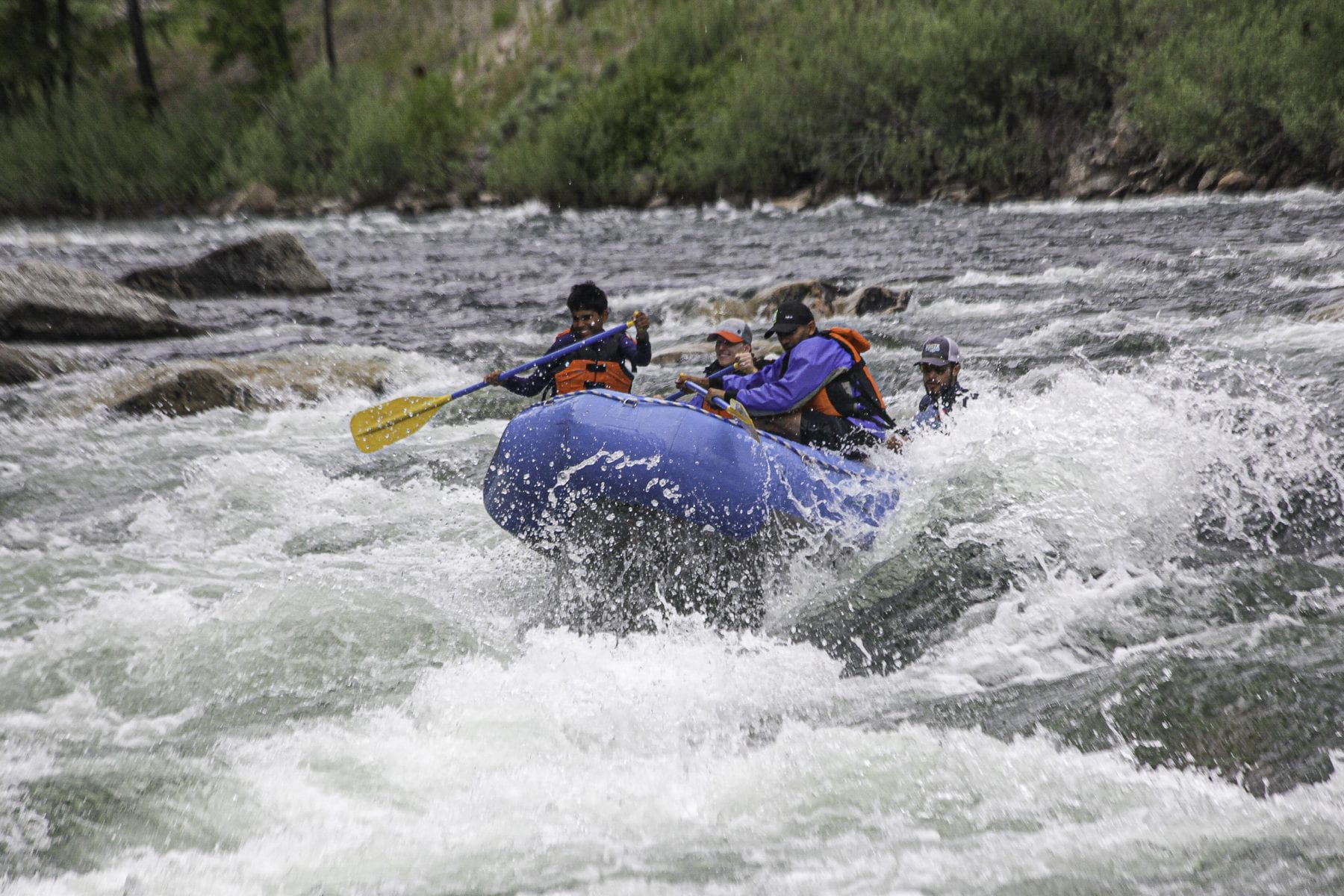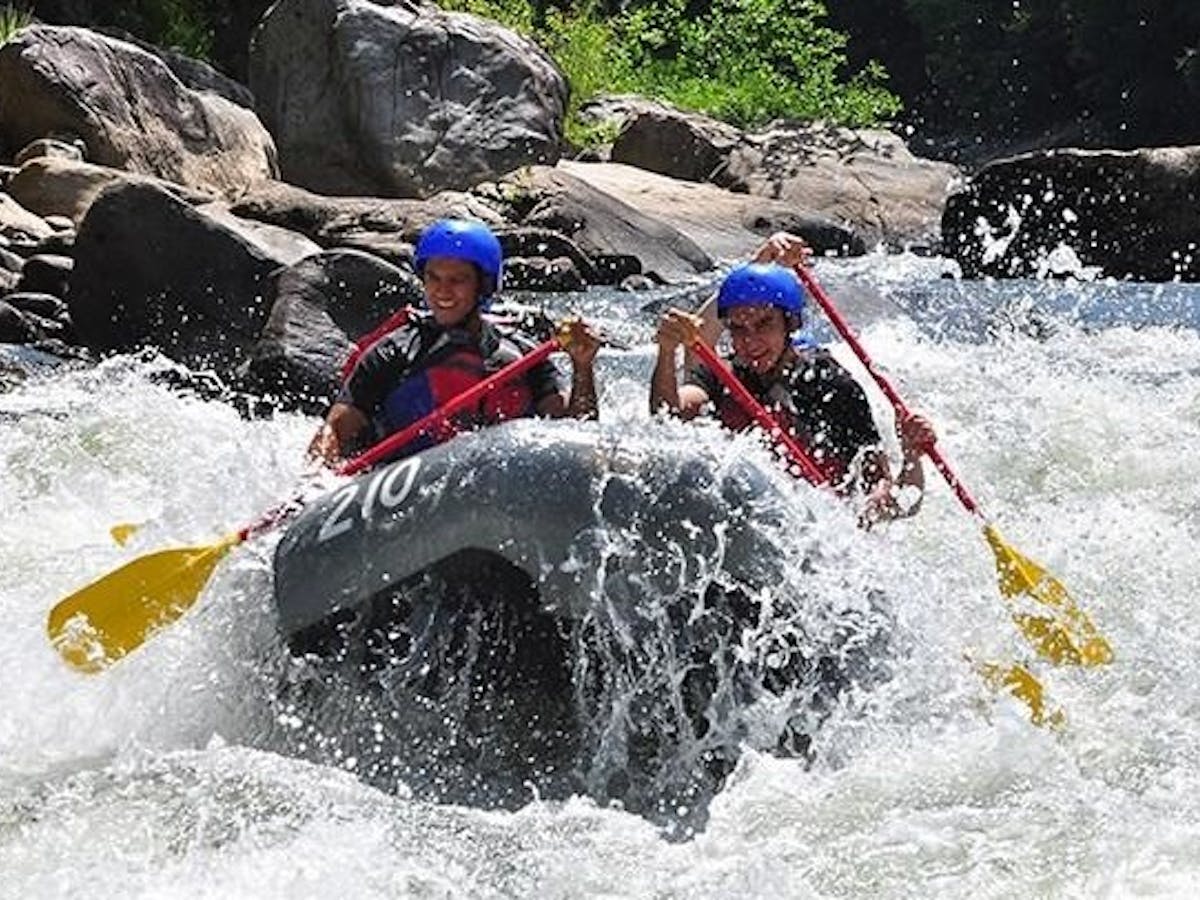White Water Rafting Colorado: A Must-Do Journey!
Crucial Skills for Water Rafting
Grasping the art of water rafting needs a combination of specific abilities and expertise to navigate the uncertain currents of rivers, making it a thrilling yet potentially hazardous activity. From recognizing the details of river dynamics to swiftwater rescue methods and smooth group communication, the trip down the river requires a mix of competence and versatility. White Water Rafting Colorado.
Paddling Techniques
Mastering effective paddling methods is essential for browsing water boatings safely and efficiently. Correct paddling not just moves the raft forward yet likewise helps in navigating and steering through varying water problems. One fundamental technique is the forward stroke, where paddlers dip the blade completely right into the water and pull it back along with the plethora to produce propulsion. Timing and control are key to make certain that all paddlers are in sync, taking full advantage of the power of each stroke.
Aside from the forward stroke, the draw stroke is crucial for making quick changes or pulling the plethora better to an item. By positioning the paddle blade perpendicular to the water's surface area and drawing the water in the direction of the boating, paddlers can effectively alter the vessel's direction. The backstroke serves as a useful tool for backing up or reducing down the boating when essential.
River Reading
Reliable paddling techniques, such as the forward stroke and draw stroke, play a vital role in interpreting and navigating river currents, an ability known as river analysis. River reading includes the ability to examine the speed, deepness, and instructions of the water flow to make educated choices while browsing rapids. By understanding just how the water moves obstacles and with different networks, rafters can choose the most effective course to safely go across the river.
One secret element of river reading is acknowledging different kinds of currents, consisting of hydraulics, eddies, and waves, and comprehending just how they can impact the raft. Eddies, as an example, are areas where the water moves in a circular motion, often offering possibilities for rest or calculated maneuvers. Waves can suggest the visibility of rocks or obstacles, calling for quick adjustments in paddling method. Hydraulics, frequently referred to as "openings," are locations where water recirculates back upstream, posturing potential hazards to plethoras.
Understanding the skill of river reading is essential for satisfying and risk-free rafting experiences, making it possible for paddlers to browse challenging waters with confidence and precision.

Swiftwater Rescue
Comprehending swiftwater rescue techniques is vital for water rafting lovers to react properly in emergency situation situations on fast-flowing rivers. Swiftwater rescue includes a collection of specialized abilities and understanding targeted at securely drawing out individuals from swift-moving water. One key facet of swiftwater rescue is acknowledging the risks present in fast-flowing rivers, such as filters, undercut rocks, and solid currents, to intend and implement successful rescue procedures.
Appropriate devices is necessary for swiftwater rescue, consisting of throw bags, rescue ropes, helmets, and personal flotation protection tools. Rafting enthusiasts have to be proficient at utilizing this equipment in high-stress scenarios to guarantee the security of themselves and others. Furthermore, swiftwater rescue techniques usually entail synergy and control amongst rafters to carry out complex rescue maneuvers successfully.
Learning swiftwater rescue is highly recommended for people participating in water rafting tasks, as it furnishes them with the needed skills to take care of emergency situations quickly and effectively. White Water Rafting Colorado. By comprehending and exercising swiftwater rescue techniques, water rafting enthusiasts can boost their safety and that of their fellow rafters on tough river explorations
Group Interaction
Efficient team effort in Going Here water rafting counts heavily on seamless interaction amongst employee to make sure coordinated and secure navigation with challenging river problems. Clear and succinct communication is crucial for the success of any type of rafting expedition. Staff member should be able to properly share important information such as paddling commands, warning signals, and navigational instructions.
In the commonly uncertain and hectic environment of river rafting, punctual and exact interaction can indicate the distinction between a successful run and a prospective disaster - White Water Rafting Colorado. Each group member plays an important function in the overall communication procedure, whether it be listening diligently to the overview's instructions, communicating details to other paddlers, or signaling for aid when needed
Establishing a typical language and communication system before striking the water is essential. This makes certain that every person is on the exact same page and understands just how to communicate successfully during the rafting journey. By cultivating a society of open communication and mutual regard, rafting groups can boost their performance and safety and security on the river.

Safety Procedures
In the context of water rafting, the structure of team interaction click this site developed throughout explorations is additional reinforced via strict adherence to safety and security procedures. Security protocols are vital in guaranteeing the well-being of both rafters and guides throughout water rafting tours.
An additional trick safety procedure is the extensive rundown given by guides prior to embarking on a rafting trip. By strictly sticking to these safety and security methods, water rafting expeditions can be both secure and thrilling for all individuals included.
Final Thought
In verdict, mastering essential abilities for water rafting is crucial for a pleasurable and safe experience on the river. Paddling strategies, river analysis, swiftwater rescue, group interaction, and safety procedures are all crucial elements that contribute to an effective rafting journey. By developing these abilities, rafters can browse tough waters with confidence and guarantee the safety and security of themselves and their staff member.
Understanding the art the original source of water rafting calls for a combination of exact skills and expertise to browse the unpredictable currents of rivers, making it a thrilling yet potentially unsafe task. By putting the paddle blade perpendicular to the water's surface and pulling the water towards the raft, paddlers can successfully transform the vessel's instructions.Understanding swiftwater rescue strategies is important for water rafting fanatics to respond properly in emergency scenarios on fast-flowing rivers.Efficient team effort in water rafting counts heavily on seamless communication amongst group members to make certain worked with and secure navigation with challenging river conditions.In conclusion, understanding important skills for water rafting is crucial for a delightful and safe experience on the river.